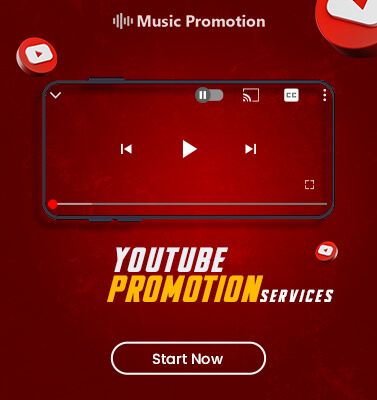
Music is a competitive industry and having an online brand image helps tremendously in establishing yourself as a musician. It does not matter if you are an artist who is just starting, or someone who needs to update their presence to solidify it for their audiences, having a music website is necessary.
Having your own music website can help you expand your fan base, and at the same can be a place where you can promote the release of your upcoming album or even gigs. Music websites are also a way to earn extra money as you can sell your merchandise. On top of that, websites help you to build a community among your fan base, making it even stronger. Bottom line, having a website for musicians is not only important but has become a necessity. So if you are also thinking about how to create a music website, then here is the comprehensive guide that will allow you to give it a look of your dreams!
How to create your music website? A complete guide:
1. Website Template:
The first step is to choose a music website that suits your music and online brand. This template can be as flexible as you want it to be as it allows you to choose a modern, and nice-looking website. While making the decision, consider your brand and go for a template that flows naturally and nicely with your style of music. Make sure the website's menu is about 5-8 pages which should ideally be set either at the top, below, or left to the main image of yours. This menu can be a horizontal or sidebar menu, but over time, if you want to add more pages like fan subscription or discography pages, a horizontal one is the ideal choice. You need to make sure the template is mobile responsive and need to add a lot of content to the website. Content such as a back catalog of music, bios, etc. gives your fans a chance to build a more intimate relationship with you.
2. Header image:
Selecting an appropriate header image is a great way to instantly connect to your listeners, giving them a sense of what music you produce. So choose a high-quality image for your header that is on brand, and conveys who you are. This will help your listeners create the first impression of you, which should never be ignored or overlooked. The optimal header is landscape-style and has space around the edges. If you do not have a high-quality artist image, it is fine, you can still create that good first impression with a large text title or logo. You can place this at the top of your webpage to grab the most attention and use this imagery throughout all of your content.
3. Fonts and colors:
The first rule of making a hit website for your music is to customize and give it a look that you think suits your artist profile the best. While customizing, considering color and font sizes are equally important as choosing your image. The primary focus of your website should be on your music so to avoid distraction, you need to choose a few main colors and stick to them throughout the webpages. Choosing a neutral palette for your website works best if you are just starting in the industry so that your image can offer the rest. If the image contains distinct color choices, make sure to add those in your titles, sections, and buttons. Similarly, go with simple font choices so that the content is easy to read and understand.
4. Website navigation:
Now that the design is all set, it is time to focus on the navigation of the website. Adding a menu that is quick to locate is essential for listeners who are visiting your website for the first time. It also encourages them to navigate your website. The next thing is to limit the web pages to 8 or fewer as it avoids keeping the menu from being too cluttered and offering visitors too many choices at once. If you think you have additional content, you can create subpages, while making clear page names. Use simple names that accurately describe the content on each page to avoid confusion.
5. The final step:
Once you are set with your template, page structure, and design in place, it is time to create the pages of your music website. If you have plenty of content and music to share, you can break it down to a few pages. The only rule is to not feel overwhelmed.
Having a well-organized and professional music website helps in conveying your career or current project to your listeners and fan base.



Drake as a Brand: Meet The Graham’s Exclusive Marketing Strategy

Darrell Wiles Spreading His Unique Charm with The Track ‘It's All Love’

Christian Krauter Attracting Global Audiences with the Song ‘mr lee’

Top 10 Fastest-Growing Emerging Music Genres in 2025